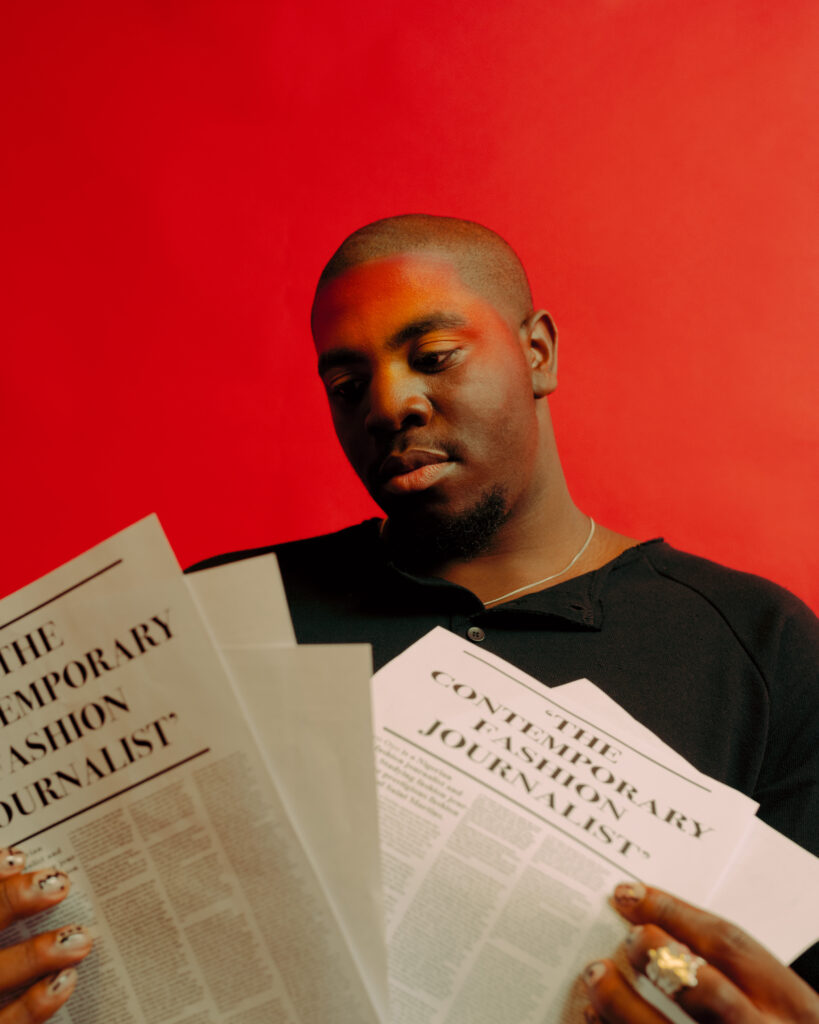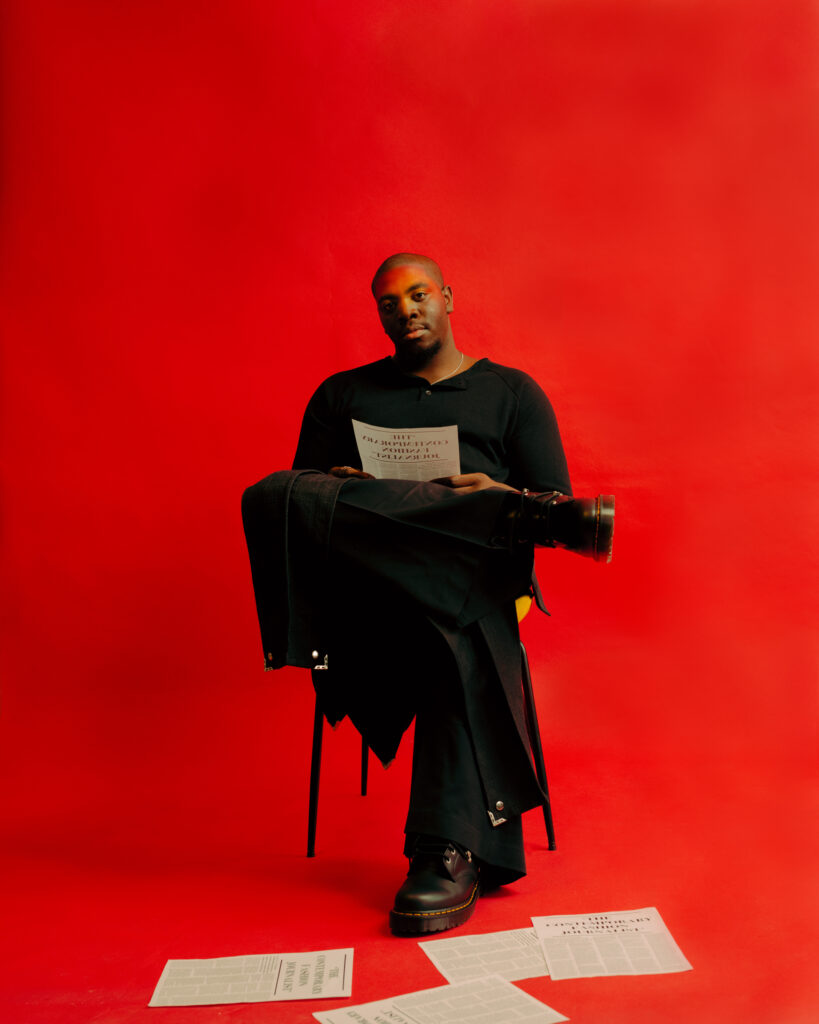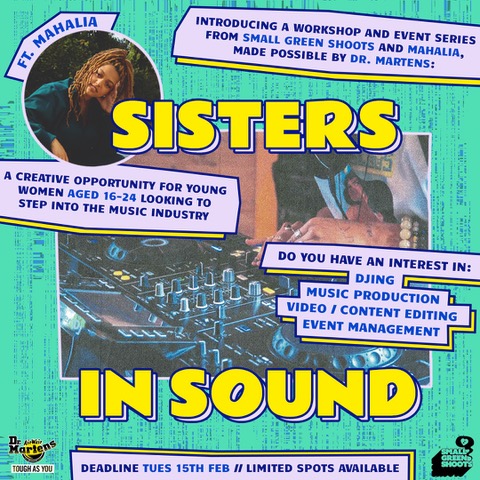The Contemporary Fashion Journalist: Odunayo Ojo

In 2022 almost every career path is accessible; if not by traditional means, social media is a viable alternative route you can take. It is still a road less travelled, but if you have an internet connection and a smartphone, you can connect with many people globally and share what you have to offer.
Meet Odunayo Ojo, a Nigerian-British YouTuber and Fashion Journalist who has done just this. Ojo’s journey to fashion journalist has been a mix of traditional and unconventional steps. He studied engineering and currently studies fashion journalism at the prestigious Central Saint Martins. While completing a fashion internship, Ojo noticed a big gap in the fashion content available to watch on YouTube, leading him to begin his YouTube channel, The Fashion Archive, in 2018. The Fashion Archive is just that, a record of Ojo’s thoughts, opinions on current designers and runway shows, fashion history research, and recently exploring the fashion scene in other countries. Ojo has a fresh perspective with his generous, inclusive and informed approach to fashion communication.
Last year Ojo debuted his magazine that shares the same name as his YouTube channel, a book-like collection of upcoming fashion designers and original fashion stories for an audience interested in discovery.
It is still fairly uncommon for Black men to talk and write about fashion the way Ojo does. As a contemporary leader in this space, we speak to Ojo below about what it’s like to pave his way in fashion journalism in the social media age:
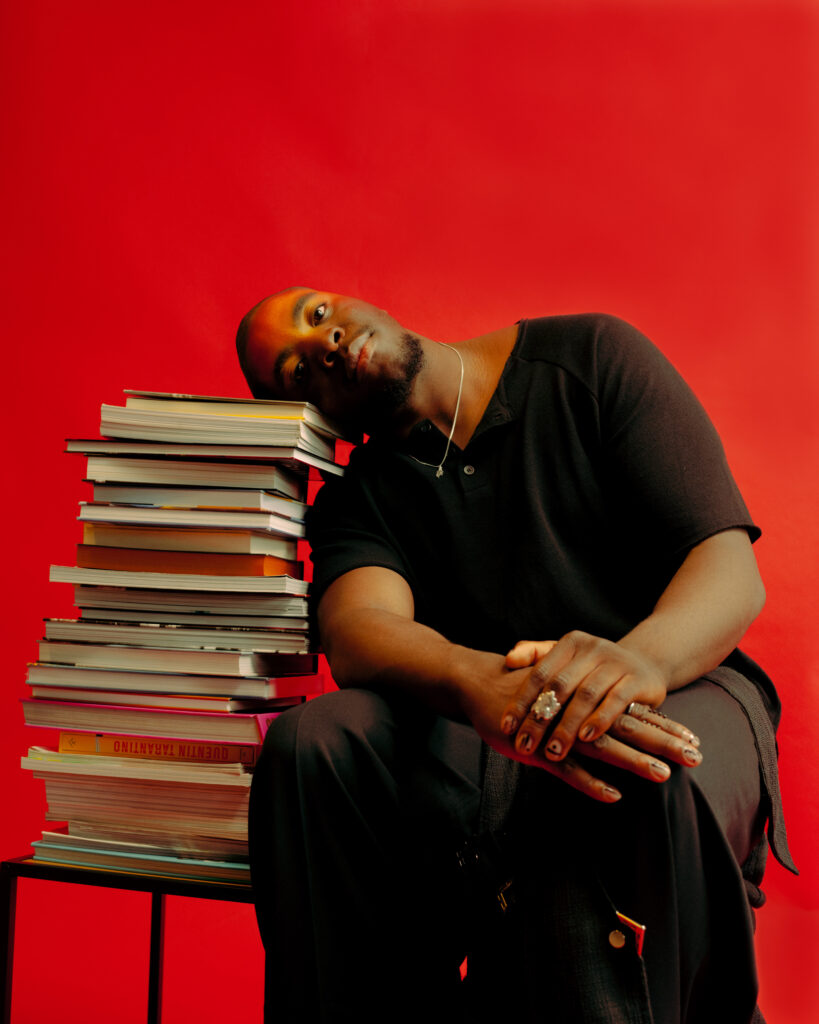
Who are some of your inspirations?
As far as writing goes, André Leon Talley that just died recently. Robin Givhan she’s a writer for The Washington Post. She’s a huge inspiration because she’s the most accessible fashion writer, like ever, and she also happens to be Black. So I just think where she’s reached as a Black woman is inspirational.
What kind of stories would you say interest you?
I have different interests; I’m interested in fashion, of course. Cars and sports mainly, so anything to do with those. But in terms of fashion, I just like storytelling. Someone who is good at storytelling, designers, stylists, those are the people I’m a fan of. So stylists like Ibrahim Kamara, designers like Ann Demeulemeester and she can tell really good stories.
Do you root for the villain or hero in a story?
Probably the villain.
Why?
Because it’s just normal to root for the hero, and I always like to go different.
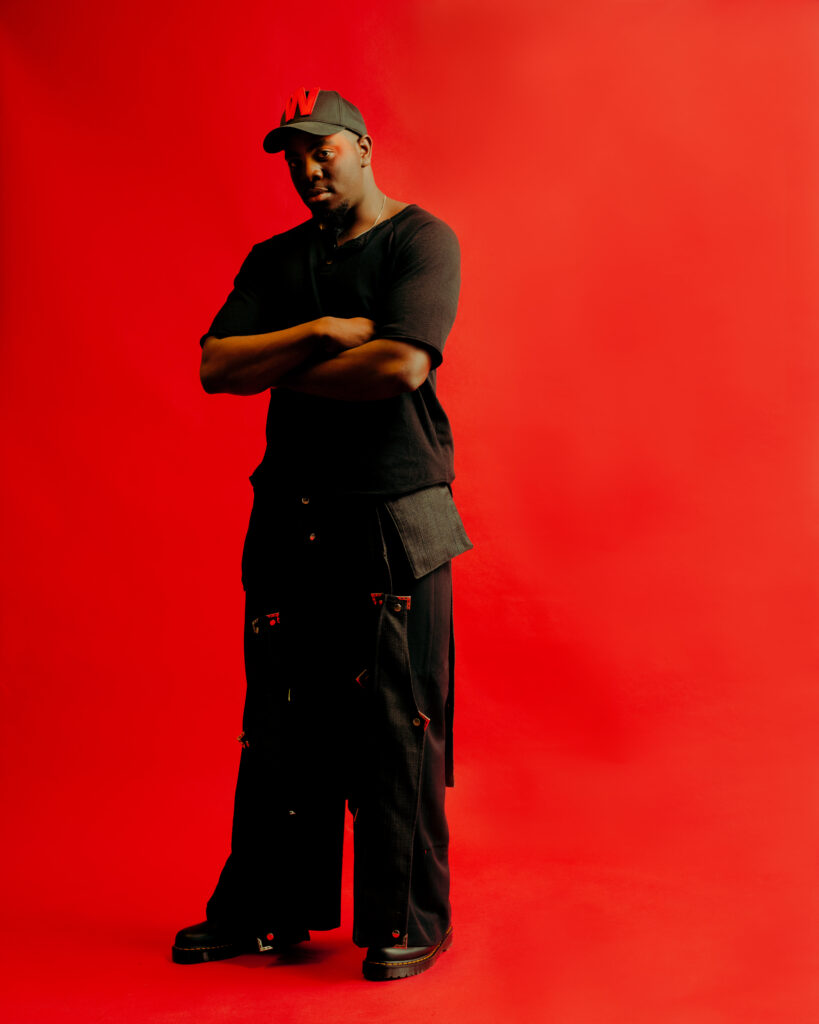
Why did you decide to use YouTube as an outlet for telling your stories and building a community interested in fashion?
The long answer is when I did my first fashion internship; I realised that on YouTube, when you go on YouTube, the only fashion content you see is like how to style or like ways to wear. At the time I made my channel, there was no like runway analysis, talking about the history, and in my head, I was thinking why, if fashion is so broad, why is that when you go on YouTube, the only content is like, okay styling white shoes three ways or ways to wear denim. So I thought I’m just going to, you know, talk about the stuff that I’m learning in my fashion internship and just make a YouTube channel. I had already made YouTube channels before for like dance like jerking and stuff back in the day, so YouTube was kind of like a platform I was comfortable with. Then as it progressed, I realised that what I did was actually Journalism, so then I started to think, oh, I actually want to be a journalist. That’s kind of what I’m doing now. I’m writing scripts, I’m doing research, and then that’s how I kind of shifted completely.
So what does your process look like when you create a YouTube video? Because I know a lot goes into it.
It depends on the type of video, but most times, I have to read a few books, sometimes maybe do an interview with some people who work for the brand, or whoever I’m talking about. If I can interview them directly sometimes, I’ll do that as well and then get all the information together. The issue is that when you do that much research, and I’m trying to make a 20-minute video because otherwise, people’s attention spans are gone, so then the hard part is really condensing loads of information into 20 minutes of content, so that takes like days sometimes weeks.
What do you think media publications could improve on?
Well, big magazines, we’re talking like Vogue, GQ, well Condé Nast is the one, is always my target. The problem with Condé Nast is they’ve done things a certain way for over a hundred years, and now that everything is going digital, their digital strategy is quite terrible, and that’s one thing they could improve on. Also, the way they allocate money so 50 years ago it might have worked to fly out the whole team and put them in fancy hotels and stuff, but it doesn’t work now, and that’s why a lot of Condé Nast publications have folded, because they didn’t adjust to like the way they spend money, the digital market, and so I think most big publications that’s where they’re missing; the digital side of things.
So what are you doing differently with The Fashion Archive?
The thing that’s different between my magazine and, say, a Vogue is that my magazine started online first and then went to print. Whereas Vogue started on print, and now they’re trying to be big and digital. So as far as the new scheme of fashion goes, I started the right way around, digital side first and then going to print.
How would you describe your style?
I’d say it’s simple but complicated at the same time. So I go for simple colours, but I don’t go for simple designs most times. Most of my jackets, if it’s not crazy distressed, it’s super wide, but the colours will be very simple though. So maybe complicated in shape or silhouette but simple in colour.
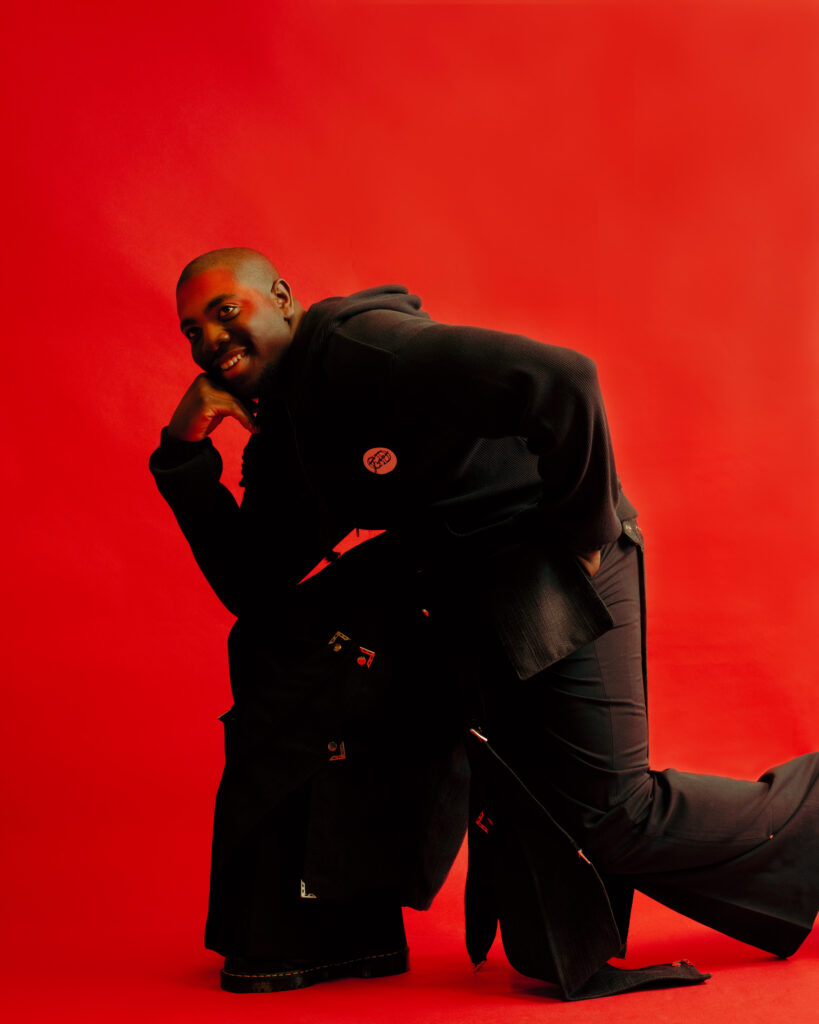

Is there a key moment that changed your trajectory?
I can’t point to one key moment; I can point to separate key moments. So there were times when I started to realise the type of people that watch my content, which surprised me.
How did you have that realisation?
Because I’d talk to designers, I’d see designers on the street that I’ve been following for 5, 6 years and they’ll be like, oh yeah I watch your videos, and I’m like why are you watching my… aren’t you like busy… don’t you have more important stuff to do. So that’s how I met Samuel Ross from A-COLD-WALL.
You just bumped into him on the street?
I bumped into him in Selfridges, and he actually, he came up to me and was like, bro, I rate your thing, I was like what, it’s Samuel Ross. So then I realised, so for example, for a uni project I reached out to Thebe Magugu, a South African designer, and I’m a fan of his work, I thought he wouldn’t respond, and then he responded like, oh, I’ve been watching your content, so this is really fun, and I’m like why’s this guy watching my…So I think I realised that actually, I was starting to become slightly known in the industry, and then that led to like more of the journalism roles and the actual writing roles. So I’d say that was kind of where the turning point was.
How did you get into your BOF fellowship?
They did a fellowship for Black Journalists, and it was just an application process, so you just send in like the articles you’ve written, kind of like a CV, and then I think a few of us got to the interview stage, and then they interviewed us, asked us why we want to write for BOF, what do you like about BOF, what type of stories would you write if you wrote at BOF, all that sort of stuff and then eventually I got it. It was only two people that got it, so it was me and a girl based in South Africa. So yeah, that was good.

Who are some of your favourite designers right now?
Okay, so established favourite designers, I’d say Ann Demeulemeester, Rick Owens and Yohji Yamamoto. In terms of up and coming, one of my favourites is Thebe Magugu, South African designer. Yeah, I think Thebe is like one of the up-and-coming designers that I’m really looking at. There’s also a Nigerian designer called Tokyo James whose work I really like. So I’d say those two, Thebe Magugu and Tokyo James, as far as up and coming talents.
Do you have any advice for someone starting out who wants to pursue Journalism?
In fashion journalism, you just have to be proactive. As a journalist, you have to be finding stories and writing constantly. You can’t expect work to land on your lap if you’re not actively writing articles, and interviewing people, and building connections that way. So if you want to be successful in fashion journalism, I would just say be proactive and try to build a platform. It doesn’t have to be big, but so long as you have somewhere where you’re like making content, or you’re writing – it could literally be a TikTok. Now in the sort of digital era, what Journalism is, is very skewed. You can be a YouTuber and be a Journalist. You can be a TikToker and be a Journalist. So long as you have a platform and you’re constantly making stuff, I think [that’s] the best thing to do.
Discover more from GUAP’s Fashion section here




![ZINO VINCI’S ‘FILTHY & DISGUSTING’EP BRINGS YOU TO THE CORE OF THE ARTIST [@ZinoVinci]](https://guap.co/wp-content/uploads/2023/10/Zino-4.jpg)

